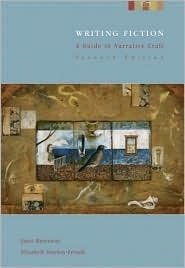
26 Aug Book Review of Writing Fiction: A Guide to Narrative Craft
Delving into Narrative Craft: A Review of Writing Fiction by Janet Burroway
As a lifelong reader and occasional writer, Janet Burroway’s Writing Fiction: A Guide to Narrative Craft immediately piqued my interest. The promise of a comprehensive guide that many creative writing programs across the U.S. embrace felt like the literary equivalent of finding a treasure map. I’m not just looking to dabble; I want to hone my craft! Little did I know, this book would both inspire and challenge my perceptions about writing, especially in today’s literary landscape.
At the heart of Burroway’s work is a powerful focus on literary fiction, presenting an intriguing viewpoint: while it can be beneficial to study literary techniques for writing genre fiction, the reverse isn’t necessarily true. This reminded me of a fascinating comparison she draws between realism in writing and still life in painting—an analogy that suddenly clarified why certain literary techniques resonate with readers so deeply. I found myself nodding along, realizing how the intricacies of crafting a story can mirror the delicate details a painter employs to breathe life into a canvas.
However, while Writing Fiction is undoubtedly broad in scope, it doesn’t delve deeply enough into certain critical topics. For instance, if you’re after a focused examination of characterization or point of view, other titles like Swain’s Techniques of the Selling Writer or Orson Scott Card’s Characters and Viewpoint offer specialized insights that Burroway touches on but doesn’t fully unpack. I must admit, I sometimes found Burroway’s approach left me to grapple with the short stories integrated at the end of each chapter. While they were excellent reads (seriously, “Mule Killers” by Lydia Peelle is a gem!), I yearned for clearer connections between the techniques discussed and their application in these stories. Guidance would have enhanced my understanding significantly.
Burroway’s engaging writing style is warm and accessible, which made me feel like I was sitting in a cozy cafe while she shared her wisdom. Yet, there were moments when her questions lingered unanswered, which left me wanting more. It’s a bit like having a mentor who poses thought-provoking inquiries but then walks away, leaving you to reflect without ever guiding you toward closure.
One point that particularly challenged my thinking was her take on the “show, don’t tell” rule. Rather than an absolute that stifles creativity, I see telling as an invaluable tool when wielded wisely, something that was frustratingly glossed over. The lack of clarity on instances when certain techniques, like filtering, might be legitimate makes the reader question the steadfastness of her recommendations.
All things considered, I found Writing Fiction to be an insightful and enlightening read—packed with valuable lessons for anyone serious about honing their writing skills. The balance between theory and practice, complemented by contemporary short stories, does offer a foundation for examining the intricacies of narrative craft.
I would wholeheartedly recommend this book to aspiring writers, creative writing students, or even seasoned authors looking to revisit their fundamentals. While it has its quirks and limitations, its core tenets offer a rich tapestry of knowledge that can significantly influence one’s writing journey. For me, this experience was not just an exploration of narrative craft; it sparked a renewed vigor to engage with my own writing in deeper and more meaningful ways. Cheers to that!
Discover more about Writing Fiction: A Guide to Narrative Craft on GoodReads >>









